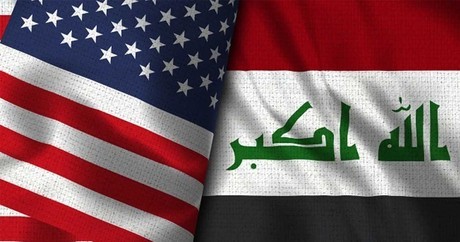Iraq-US Relations since 2003

Key dates in relations between Iraq and the United States, which invaded in 2003, before withdrawing in 2011, only to return three years later to battle the Islamic State group.
- Invasion -
On March 20, 2003, the US leads an invasion of Iraq citing claims that Saddam Hussein's regime is harbouring weapons of mass destruction.
On April 9, US troops capture Baghdad, where a large statue of Saddam is symbolically toppled by a US tank amid celebrations by a crowd of Iraqis.
US President George W. Bush announces the end of major combat operations on May 1, but says the war against "terrorism" continues.
On October 2, a US report acknowledges no weapons of mass destruction have been found in Iraq.
On December 13, Saddam is captured near his hometown of Tikrit after nine months on the run. He is hanged three years later.
The broadcast in April 2004 of images of torture and other abuse of Iraqis detained at the US-run Abu Ghraib military prison shocks the world.
Power is transferred to an interim government in June.
- Insurgency, sectarian conflict -
In November 2004, more than 10,000 American and 2,000 Iraqi soldiers attack the overwhelmingly Sunni Arab city of Fallujah, which has become a symbol of resistance to foreign occupation, after the lynching of four Americans in March.
In February 2006, Al-Qaeda-linked Sunni extremists blow up a Shiite shrine in Samarra, sparking a wave of sectarian killings that rages until 2008 and leaves tens of thousands dead.
In January 2007, Bush announces the deployment of 30,000 more troops, bringing the total to 165,000, saying the surge is needed to help Iraq's embattled government restore control.
- US soldiers depart -
In February 2009, new US president Barack Obama, who had deeply opposed the war in Iraq, says most troops will be withdrawn by August 2010.
On December 18, 2011, the last US soldiers leave.
Between 2003 and 2011, more than 100,000 civilians were killed, according to the Iraq Body Count database. The United States has lost nearly 4,500 troops.
- Fighting the jihadists -
In January 2014, jihadists from the Islamic State group, capture Fallujah and parts of nearby Ramadi.
In June, they seize the northern city of Mosul and by the end of 2014 hold one-third of Iraq.
The United States intervenes directly in Iraq for the first time since its forces withdrew in 2011, bombarding jihadist positions which threaten Iraqi Kurdistan and thousands of Christians and Yazidis.
With the help of the US-led coalition, Iraqi forces drive IS from all the country's urban centres and, in December 2017, declare victory against IS.
- Between US and Iran -
Since 2003, US arch-foe Iran, which supports factions of the Hashed al-Shaabi paramilitary force that played a key role driving out IS, has strengthened its influence and become a major trading partner with Iraq.
On December 31, 2019, thousands of Iraqis attack the US embassy in Baghdad to protest a deadly bombing against a Hashed faction.
On January 3, 2020, top Iranian general Qasem Soleimani and senior Hashed commander Abu Mahdi al-Muhandis are killed in a US air strike in Baghdad.
Iran responds with missile strikes on bases hosting US soldiers in Iraq.
The Iraqi parliament calls on the government to end the presence of foreign troops in Iraq, where 5,000 American troops are stationed.
In early May, intelligence chief Mustafa al-Kadhemi, who has links with both Washington and Tehran, is appointed prime minister replacing Adel Abdel Mahdi, who was ousted after street protests left hundreds dead last October.
- Towards a withdrawal -
On August 20, Kadhemi is hosted for the first time by Trump, who says US forces will leave Iraq but gives no timetable or troop levels.
On September 9, Trump was expected to announce a new troop withdrawal, a senior administration official said.



